I’m sitting in a small hunting cabin in St. Xavier, Montana in the middle of the Crow reservation, population: 83. We dipped down off of I90 at Billings across a dry landscape and flat farmlands. We hadn’t given it much thought. An AirBnB in a convenient location with room to park the Rialta and take a break for a few days. St. Xavier is a crossroads with a few gravel paths labeled “First Street” and “Second Street” and third. But everything is abandoned. The two-story schoolhouse is in ruins. The cafe a husk. Empty trailers and wooden houses crumbling under their weight. A few houses with lights on. And a post office with coke machines out front. It’s a strange sort of quiet. A nothingness. The stares of a far-off workman from time to time. But mostly we are alone.
It didn’t occur to us that many of the reservations were closed to visitors due to COVID. Protecting elders is a priority here. But we stumbled into town without thinking.
I feel like a trespasser.
This is Big Horn county. A short drive away is the Battle of Little Big Horn battlefield. The consequences of Custer as the manifestation of American conquest would follow us through these places. Through the black hills and across South Dakota into the Badlands. The popular genocide of the native plains people. A mix of shame and anger.
I’m conflicted about writing this. I am not attempting to speak for the experience of native people. I know that this history is complex. And the tribes involved have complex relationships. Both with each other and with European settlers. Tribes were not joined together with one agenda or purpose and I’m not making the case for a noble mythology of native people. But even today as I drive I90, the mythology of a god-ordained white nation driving out the savages and reclaiming the land for god-fearing white people is celebrated across the stolen lands and across the corpses of millions of native people. The nationalist fairytales of western heroes and righteous conquest. Of calvary men riding to the rescue of innocent settlers besieged by bloodthirsty natives. This is all harmful bullshit. To deny what happened. To proudly remake history to wash the blood off our hands. It’s unconscionable. I cannot be here, look out across site after site of federally sponsored genocide, without the bitterest of sadness and depression. To know that this is still going on, makes my heart hurt.
So I can’t with clear conscience just talk about the sunsets and the cabin and the things that I saw. I have to say something. So here’s just a single thread to this story. Though an important story to this area and of the Black Hills through which I’m headed. And that’s the story of Custer and the 7th Calvary.
George Armstrong Custer. A character of his own fiction that he wrote tirelessly and published in journals, then posthumously by his widow.
The story started much earlier. Custer, a civil war hero, moves to the 7th Calvary to fight the native plains tribes for the US government. As Americans spread westward to consume the landscapes across inhabited lands, the natives are treated like dangerous wild animals that must be broken and corralled or exterminated.
These nomadic tribes will be systematically hunted down and the survivors forced onto unwanted lands, cut off from their ways of life and left to languish. Made foreigners in the lands where their people have lived for tens of thousands of years.
The endless crushing wave of foreign invaders. Exterminating the bison, clearing forests, putting up fences.
Custer graduated last in his class at West Point but made a name for himself at Gettysburg. And later for killing Indians. Custer led the 7th Calvary at the Washita massacre in 1868 in Oklahoma. Tracking another group of natives Custer stumbled upon a peaceful encampment of 50 lodges under Chief Black Kettle. He ambushed the camp slaughtering men, women, and children including Black Kettle and his wife, shooting them in the back as they fled on a pony. The only US casualty of the attack was Captain Louis McLane Hamilton, the grandson of Alexander Hamilton.
His group then killed over 600 horses and took 53 women and children hostage to use as human shields to dissuade other tribal groups from shooting them as they fled after discovering the small group was not alone.
“General Phil Sheridan, commander of the Department of the Missouri, issued orders for the Washita River expedition, including the following: “…to destroy [Indian] villages and ponies, to kill or hang all warriors, and to bring back all woman and children [survivors].” The purpose of this “total war” strategy was to make “all segments of Indian society experience the horrors of war as fully as the warriors”.”
Custer’s human shield strategy would be used repeatedly with success throughout the following wars.
One of those prisoners was Black Kettle’s 18 year old daughter, Meotzi. Who Custer raped and impregnated. And even though Custer was long married, kept Meotzi with him, supposedly as an interpreter, even though she spoke no English, later to father a second child. Essentially a sex slave.
Custer would later smoke a peace pipe with the Cheyanne and vow never to attack them again and the ashes of the pipe poured onto the heel of his boot to bring him woe if he ever broke his vow.
Through these wars, the Sioux were forced onto reservation lands and signed the Fort Laramie Treaty of April 29, 1868 with the Americans that secured plains regions including the sacred Black Hills (which included the Devil’s Tower and present day Mount Rushmore) in perpetuity.
In 1874, Custer led the 7th Calvary on an expedition into the Black Hills and near the present day town of Custer, discovered gold, which started the Black Hills gold rush and along with it the formation of violent miner towns like the infamous Deadwood. The US government immediately passed the Indian Appropriations Bill of 1876. The bill “denied the Sioux all further appropriation and treaty-guaranteed annuities” until they gave up the Black Hills. Essentially revoking the promises of the Laramie treaty without the consent of the Sioux tribes.
To enforce the illegal repossession of the Black Hills, the federal government ordered all free plains natives to the ever shrinking reservation lands and to give up their migratory heritage and all noncomplying free natives to be executed in mass as hostile Indians.
Custer lead the 7th Calvary once again westward into Montana where the Sioux had gathered to discuss the US’s actions. He split his nearly 700 armed calvary men into four divisions and surrounded what he believed to be 800 natives amassed near the Big Horn river. His plan was to attack the unsuspecting village and then capture as many fleeing women and children noncombatants as possible to use as hostages and human shields to force the men to surrender to save their families. Though he was under orders to kill all men once captured. Custer’s attack amounted to genocide to secure gold in territories legally owned by the Sioux.
Custer was met with a far larger force than was expected and his entire unit was killed. And though the rest of his men were mutilated (as native oral tradition goes) he was spared mutilation because he was treated as the husband of Meotzi for fathering children with her.
Popular American folk lore praises Custer as a hero, a defender of the American frontier. But to many native peoples he is the embodiment of American greed, destruction and the executer of genocide.
By 1890 the Lakota Sioux had been reduced to a small band. The Lakota medicine man Black Elk had a vision of the Ghost Dance, which spurred a religious revival amongst the tribe members. This caused fear in the local white people. And though the Sioux had done nothing wrong or harmed anyone, 40 native police officers arrived at Chief Sitting Bull’s house to arrest him, and when he resisted, he was shot and killed.
The 7th Calvary was once again called in one last time. While Spotted Elk was leading his people to the Pine Ridge Agency the 500 calvary men intercepted the group of 350 men, women, and children, and marched them to an encampment at Wounded Knee. The calvary set up 4 gatling guns on a high embankment and though the natives had committed no crimes began searching the men and seizing all weapons. One elder who was deaf refused to give up his rifle because he could not hear the words of the officers. Several soldiers then tried to forcefully take the rifle when it discharged. The remaining men on the bluff then began shooting indiscriminately into the native encampment.
No one was spared. Women nursing their babies were cut down. Some women fled with their children and were hunted down and shot without question, some as far as 2 miles away. 3 days later when people came to bury the bodies in a mass grave some infants were found alive still wrapped by their dead mothers.
300 of the roughly 350 people were shot dead. Many of the casualties of the soldiers were attributed to the indiscriminate firing of their fellow troops during the massacre.
Far from being an outrage, the 7th Calvary were hailed as heroes. With this ended the long “Indian Wars” and snuffed out most of the remaining resistance to westward expansion.
“The Pioneer has before declared that our only safety depends upon the total extermination of the Indians. Having wronged them for centuries, we had better, in order to protect our civilization, follow it up by one more wrong and wipe these untamed and untamable creatures from the face of the earth. In this lies future safety for our settlers and the soldiers who are under incompetent commands. Otherwise, we may expect future years to be as full of trouble with the redskins as those have been in the past.”
-L. Frank Baum (author or Wizard of Oz)
20 medals of honor were issued to the 7th Cavalry for the massacre. Some even for the hunting down of fleeing women and children.
Chief Crazy Horse, leader of the Oglala Sioux who was a war chief at the battle of Little Big Horn surrendered a year later to the US army. He was stabbed to death four months later by a calvary man’s bayonet while a prisoner.
When asked earlier derisively, “Where are your lands now?” Crazy Horse replied, “My lands are where my dead lie buried.”
The Little Big Horn Battlefield
In the middle of the Crow tribal reservation the federal government declared the site of the attempted Sioux massacre a national monument. The marker at the top of the hill states, “To the officers and soldiers killed . . . while clearing the district of the Yellowstone of hostile indians.” It’s been expanded to include the graves of soldiers from all wars with national regalia celebrating the victories of the American west. To me the site is a blight forced on a site that should be mourned and held up as a lesson of our past. I feel no remorse for these men who came here to kill a people, even the women and children, and wipe their way of life from the earth. What pride can be had here?
It wasn’t until 1991 that the park was renamed from Custer’s Battlefield to Little Big Horn Battlefield by George Bush and a memorial recognizing the native deaths was constructed. And not until 1999 that five markers were erected showing where native soldiers had fallen in addition to the markers showing where Calvary men had fallen.


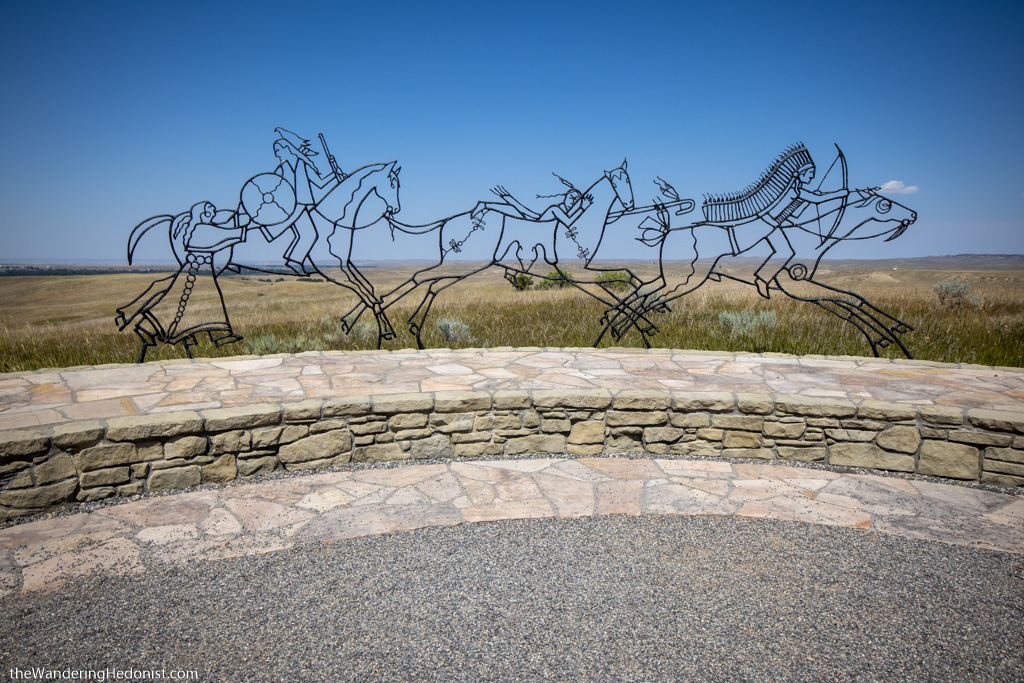

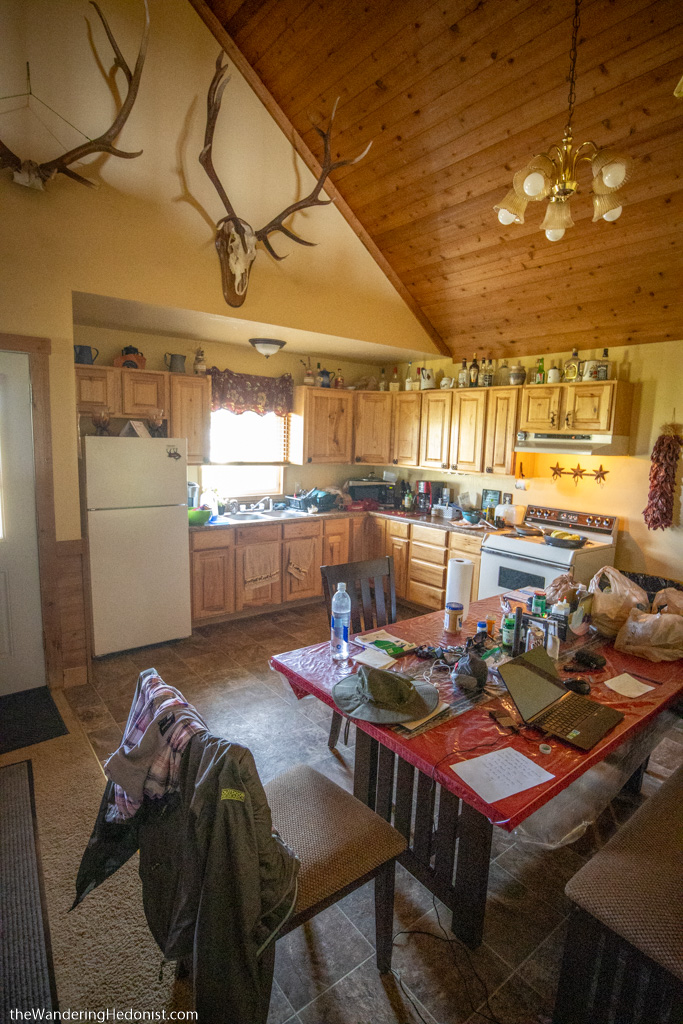




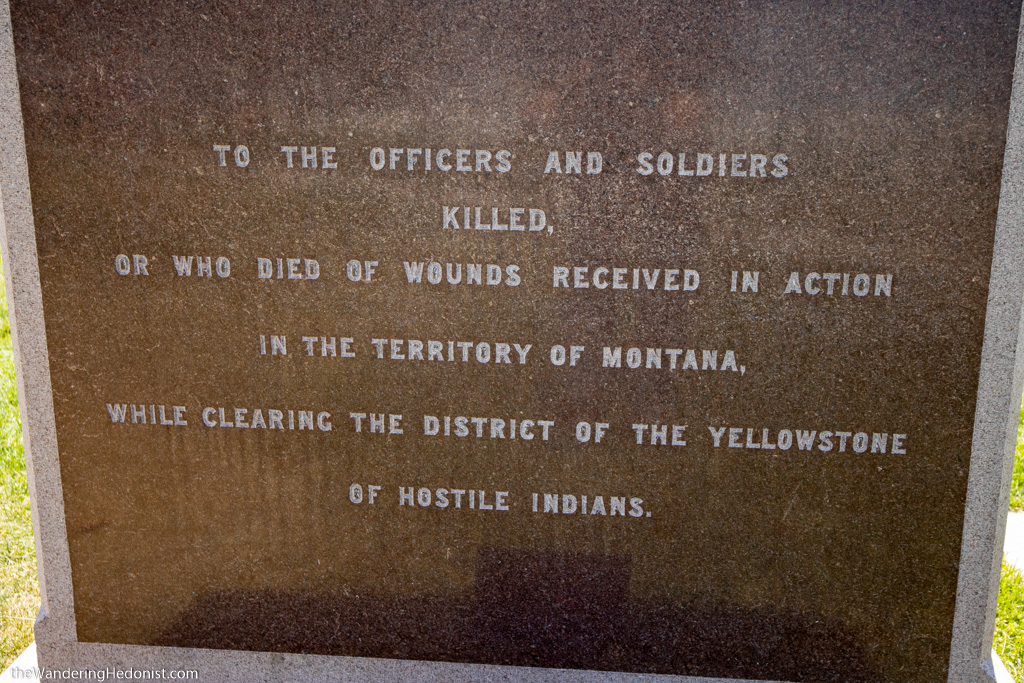




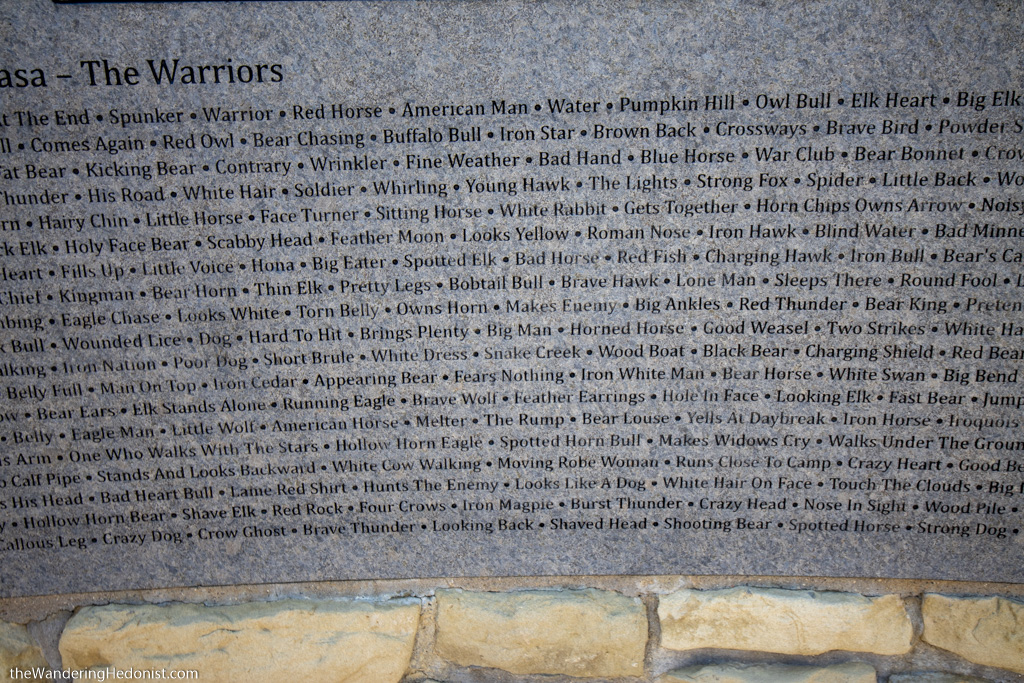

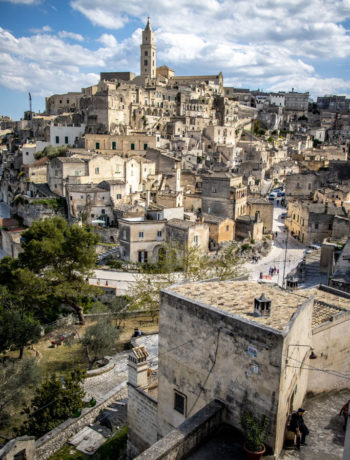
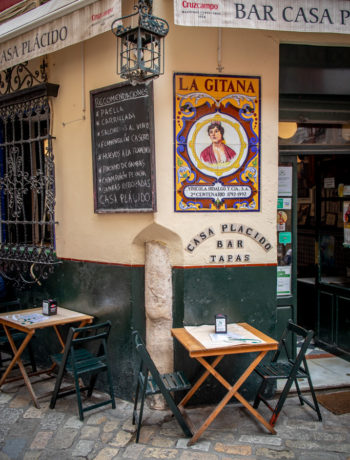
No Comments